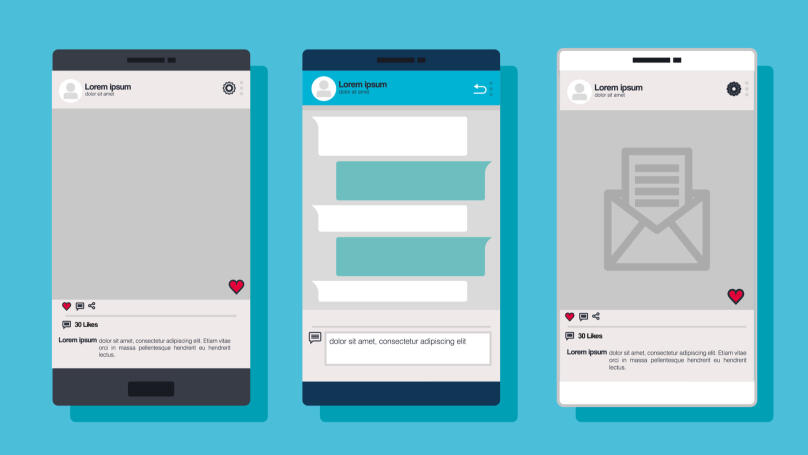How to test a business idea without losing money
Coming up with a business plan is a great idea. Although running a business without testing it first is extremely risky because you could incur huge losses.

You first need to understand whether potential customers need and would buy your services or products and whether your business concept is going to work. So, how do you test out an idea with minimal costs or even for free find out in our article?
Discuss a business idea with successful entrepreneurs
Connecting with your professional contacts as individuals with more extensive or specialised entrepreneurial experience can help you assess the profitability of an idea. Businesspeople are always in the market. You want to find out if these people think your idea is a good one if there is a gap in the market for it, and whether it will be a success.
Entrepreneurs can be found at business breakfasts, conferences, and training sessions. You could ask friends or acquaintances to help you meet the right person. You could also pay for professional advice from an experienced businessperson because it will be cheaper than starting a business. If an entrepreneur evaluates the idea as successful, they could offer you their help or mentoring, and then the idea could be transformed into a product.

Attend events and pitches
To ensure that your idea isn't pie in the sky, you need to test it out in the real world by sharing it with a potential audience and revealing your product or service. To do this, attend specialised meetings, pitching start-ups, hackathons, or business breakfasts. These events are easy to find on special groups on social media (e.g. Facebook) and in messenger (e.g. Telegram) dedicated to start-ups, as well as in the media.
When you're at meetings like this, start networking and get to know other like-minded people and ask them what they think about your business idea. For example, you want to know if an online psychological counselling service would be successful, or find out how often your speaker turns to a psychologist, how to choose the right doctor and whether they're comfortable speaking openly about seeing a psychologist? You shouldn't immediately advertise a company which hasn't yet been established. In this phase, your only task is to collect feedback and opinions and to draw the correct conclusions from them.
Prepare for meetings: make business cards, and in addition to providing your phone number, make sure you include links to your social media pages. Furthermore, don't hesitate to search for people on social media, subscribe to them, and exchange contacts. If you do start a business, these contacts will be a gold mine.
Mass surveys and in-depth interviews
There is a proven inexpensive way to test a business idea: interview your target audience. To ensure the integrity of the survey, respondents are generally paid for their time. For only a small payment, during your research, people will honestly tell you whether they're interested in your service, how much they would pay for it, what could be eliminated, and what might be added to improve your idea.
These could be mass surveys, and when you get hundreds of responses from a random sample of people, and in-depth personal interviews, if several people are specially selected to answer questions in detail.
How to conduct a quantitative survey: Prepare and advertise a landing page with questions and record the answers into a system attached to the landing page in advance. For example, you are using Google tables. You could create a simple form in Google Forms, or build a public link and share it wherever it's not prohibited, and they won't look at it and see it as spam. Therefore, use public channels, chat rooms in messengers, groups and public posts on social media. You can embed a form on your website using a survey creation service, such as Survio. Survey statistics can be downloaded from the site and analysed, which is extremely convenient.
It is worth noting that when responding to a mass survey, individuals rarely want to spend a lot of time answering questions, make sure there are not too many questions which don't require a lot of time to ponder on. You could create a form with pre-prepared answer options, and only in this situation do you deprive respondents of the opportunity to share their personal feelings and opinions. These kinds of forms are simpler to fill in, and there is a higher chance that the respondent won't lose interest and give up on the form halfway through.

How to conduct in-depth interviews: When conducting interviews, select a group of people who best fit the categories of your target audience. Interview every respondent individually and ask both some basic and some more detailed supplementary questions.
In-depth personal interviews are useful because they can be carried out with an audience that for some reason are not active on social media, for example, such as older people or politicians.
Surveys and interviews when the outcome appears to give positive results, this doesn't mean that your idea is viable, and the product can be released immediately onto the market. This result only allows you to outline a plan of action and adjust your goals. Moving forward, you need to invite people to buy your services carefully.

Pre-sale of a service or product
To make sure that people are ready to buy your product or service, launch a pre-order page.
The Landing page could be a one-page website with a simple order form. Run a small advertising campaign which is contextual, and targeted. Even though the product is not yet available, people will be able to leave their name and email address. This way, you'll be able to estimate the demand and the real number of people who want to buy a service or product from you.
Why do you need to pre-order?
- Potential consumers can learn more about you and your product.
- You can estimate at least an approximate conversion rate and how much each potential customer costs you.
- You collect a database of potential customers that you contact directly and ask them questions.

A public group or group pages on social media. Even without a website, you can assess demand. This is what Dropbox did at the time: they published a demo video on their social media explaining how the service works, and all of this had been done long before the official launch. The video didn't sell anything, but overnight, 70,000 people signed up to the company's newsletter. Here's proof that people needed the service.
On crowdfunding platforms, many projects raise money to produce a product, meaning they must sell something that doesn't even exist yet. For self-presentation, they use simple landing pages and accounts on social media, where they talk about the idea, production, and so on. You can find out what these accounts look like and get ideas for your projects - for example, on the Kickstarter website or Planeta.ru.

Make an MVP
MVP (Minimum Viable Product) is a product that you have spent the minimum amount of money to develop. It can be used, but not everything about it is perfect and complete.
MVP is needed to see how potential customers react to the product, whether they are willing to pay for it, how and in what direction the product should be further developed.
MVP can be run an infinite number of times until one of the versions works. You'll spend at least the minimum amount of money on such a minimal launch, but you'll get experience and a realistic assessment of the profitability of your future business.
To estimate demand, you don't release the entire product with all the features, but only one part of it. For example, an online language school that currently teaches only one language - English-or consulting, which currently only functions as a telegram bot.

Checklist: how to test an idea
- Find out through surveys and in-depth interviews about whether your target audience is interested in your idea.
- Analyse the results of surveys and interviews, identify insights, ideas, and features that can be improved or removed.
- Finalise the idea.
- Create a landing page for pre-order and launch pages on social media.
- Make an MVP.
- Test the MVP and analyse the results.
- Turn the MVP with the best result into a complete and finished product.
Share this with your friends via:
Latest News

A significant stage in the development of the alternative education system has begun in West Northamptonshire in the UK: the County Council is actively calling on parents, guardians, and trustees to participate in shaping the future of this key area.

Outwoods Primary School in Atherstone, Warwickshire, having experienced deep sadness after the loss of their famous cat, Silla, has found solace in a new pet – a Maine Coon named Aloysius O’Hara.

In modern universities, artificial intelligence, and in particular ChatGPT, is rapidly transforming from a controversial tool into a full-fledged student assistant.

An innovative educational project is gaining momentum in UK primary schools, aiming to change attitudes towards video games.

The Massachusetts Institute of Technology (MIT) presents MIT Learn – a revolutionary online platform that opens a “new front door” to access university knowledge and resources.












 How to Keep New Year’s Resolutions: A Detailed Guide to Real Change
How to Keep New Year’s Resolutions: A Detailed Guide to Real Change
 6 Life Areas You Have Almost Certainly Never Paid Attention To
6 Life Areas You Have Almost Certainly Never Paid Attention To
 How Not to Lose Focus When Learning Everything at Once: The Art of Selective Development
How Not to Lose Focus When Learning Everything at Once: The Art of Selective Development
 Test. What Winter Dessert Are You?
Test. What Winter Dessert Are You?
 Test: What Kind of Ancient Goddess Are You?
Test: What Kind of Ancient Goddess Are You?
 Test: Which Great Woman Would Invite You for Tea?
Test: Which Great Woman Would Invite You for Tea?

